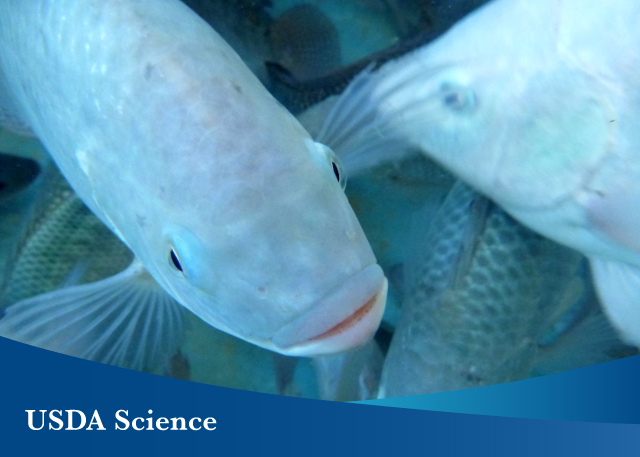It may be winter, but it is still possible to access fresh, locally-grown produce. How? With aquaponics. Americans and people living around the world can grow crops year-round in a soilless hydroponic environment regardless of their regions’ climate or season. It also has the added benefit of supplying fresh fish to the local food system.
“Aquaponics is a blend of aquaculture and hydroponics, and is the most rapidly growing segment of global agriculture,” said Carl Webster, research biologist at the Agricultural Research Service’s (ARS) Harry K. Dupree Stuttgart National Aquaculture Research Center in Arkansas.
The aquaponics system begins with tanks where fish are grown – usually tilapia, channel catfish, and hybrid striped bass. In these tanks, bacteria breaks down fish waste (feces and ammonia) into natural fertilizer. Farmers then irrigate their plants with this fertilizer in a hydroponic growing chamber. Plants raised using aquaponics typically include crops like lettuce, spinach, herbs, tomatoes, cucumbers, beans, and peppers.
The result of aquaponics is a steady supply of fresh fish and vegetables that are available in local communities throughout the year and are grown in just about any environment – from an abandoned inner-city warehouse to a climate-controlled facility in the middle of a desert. Additionally, aquaponics does not just benefit local communities; it also serves as an innovative and invaluable tool in addressing some of the world’s most pressing challenges like hunger and climate change.
“According to the United Nations, there will be more than 9 billion people living on our planet by 2050. We need to be smarter about how we grow food,” said Benjamin Beck, research leader at the ARS Aquatic Animal Health Research unit in Auburn, Alabama. “Minimizing the space used to grow food and/or growing more than one crop at the same time could help relieve pressure on land production of crops while still providing a locally-grown source of food.”

